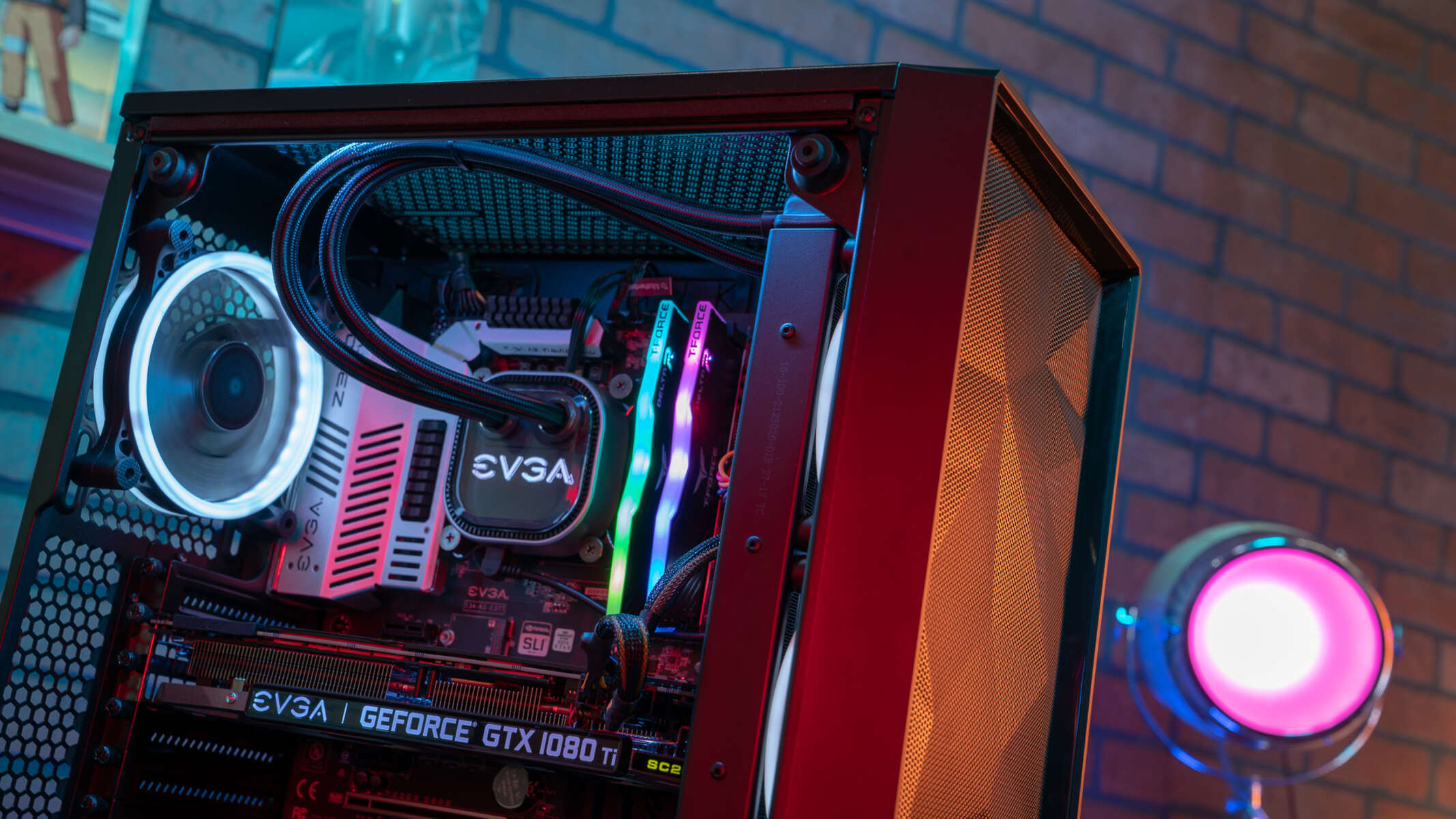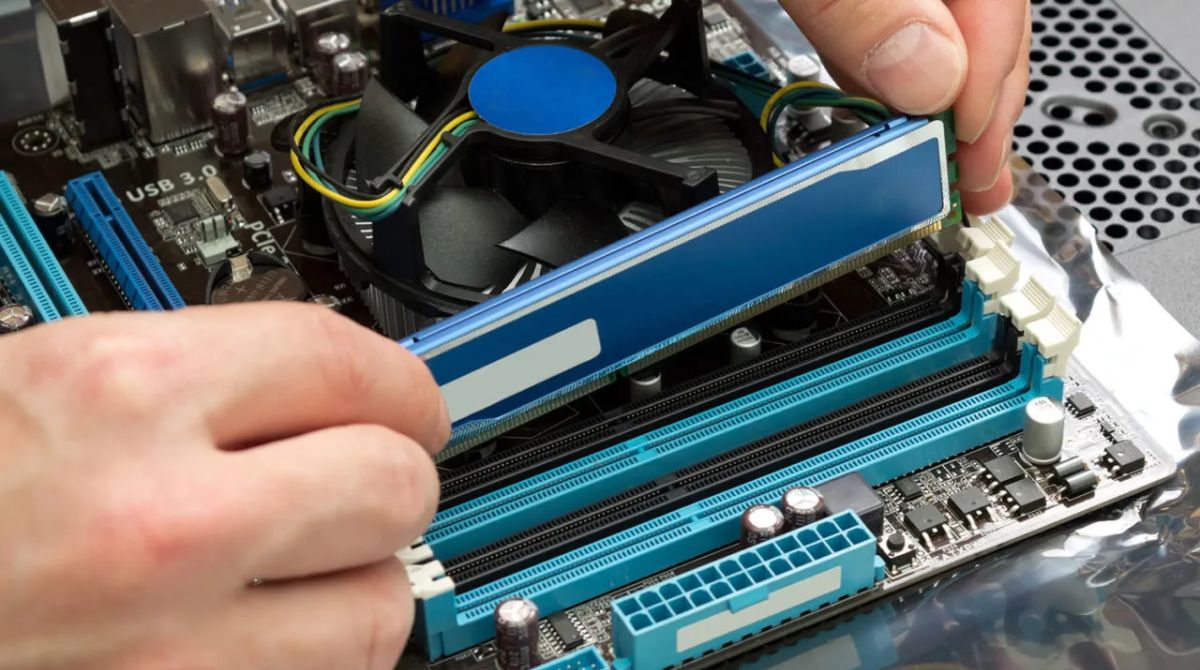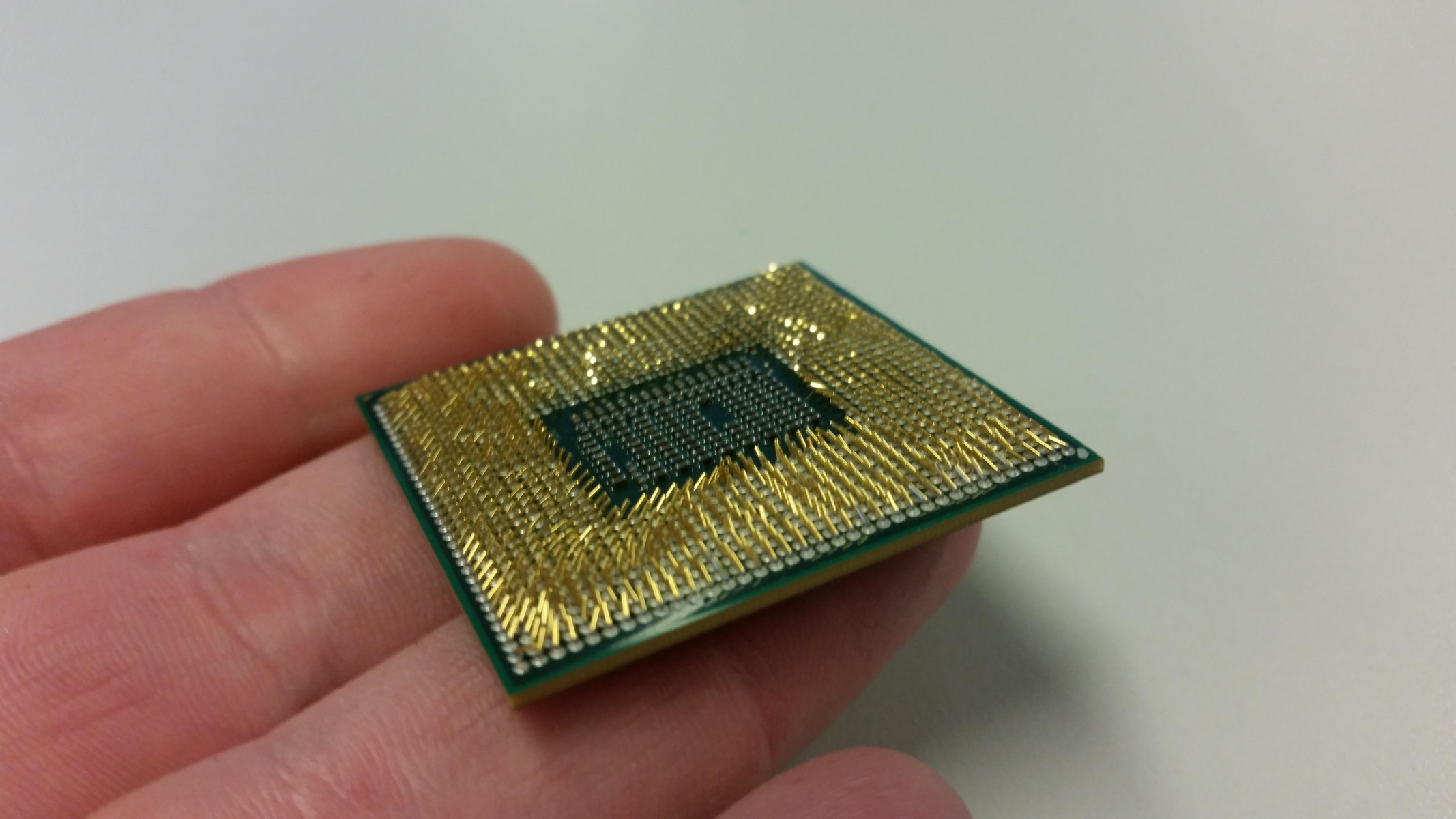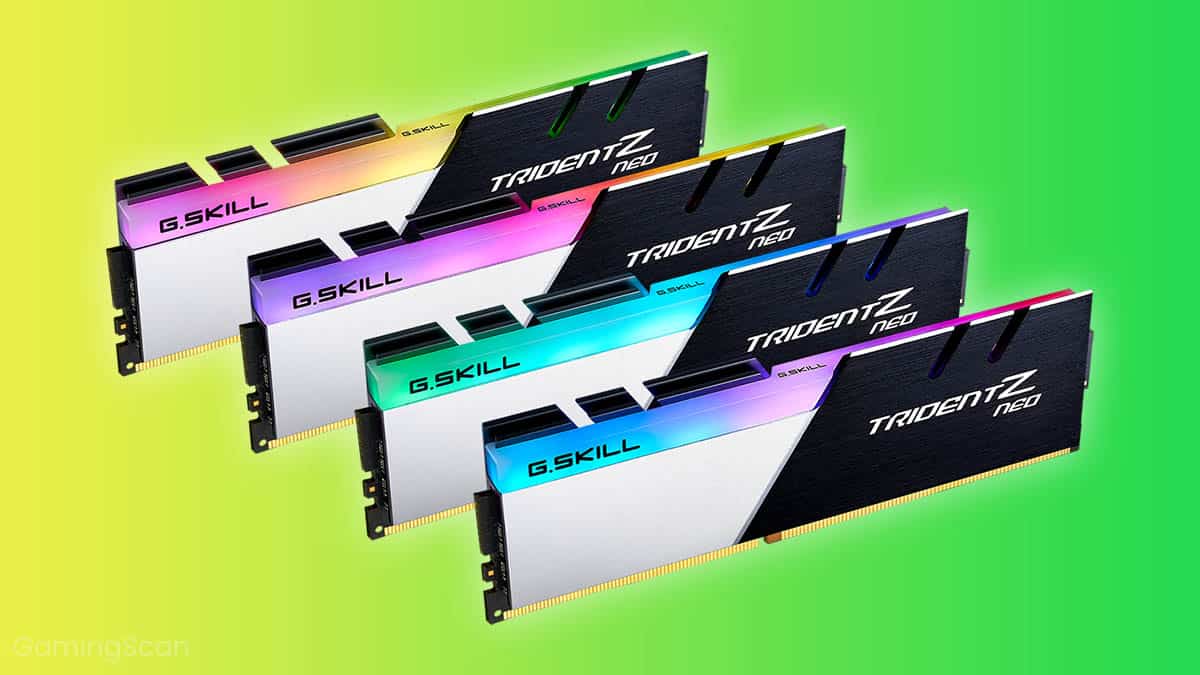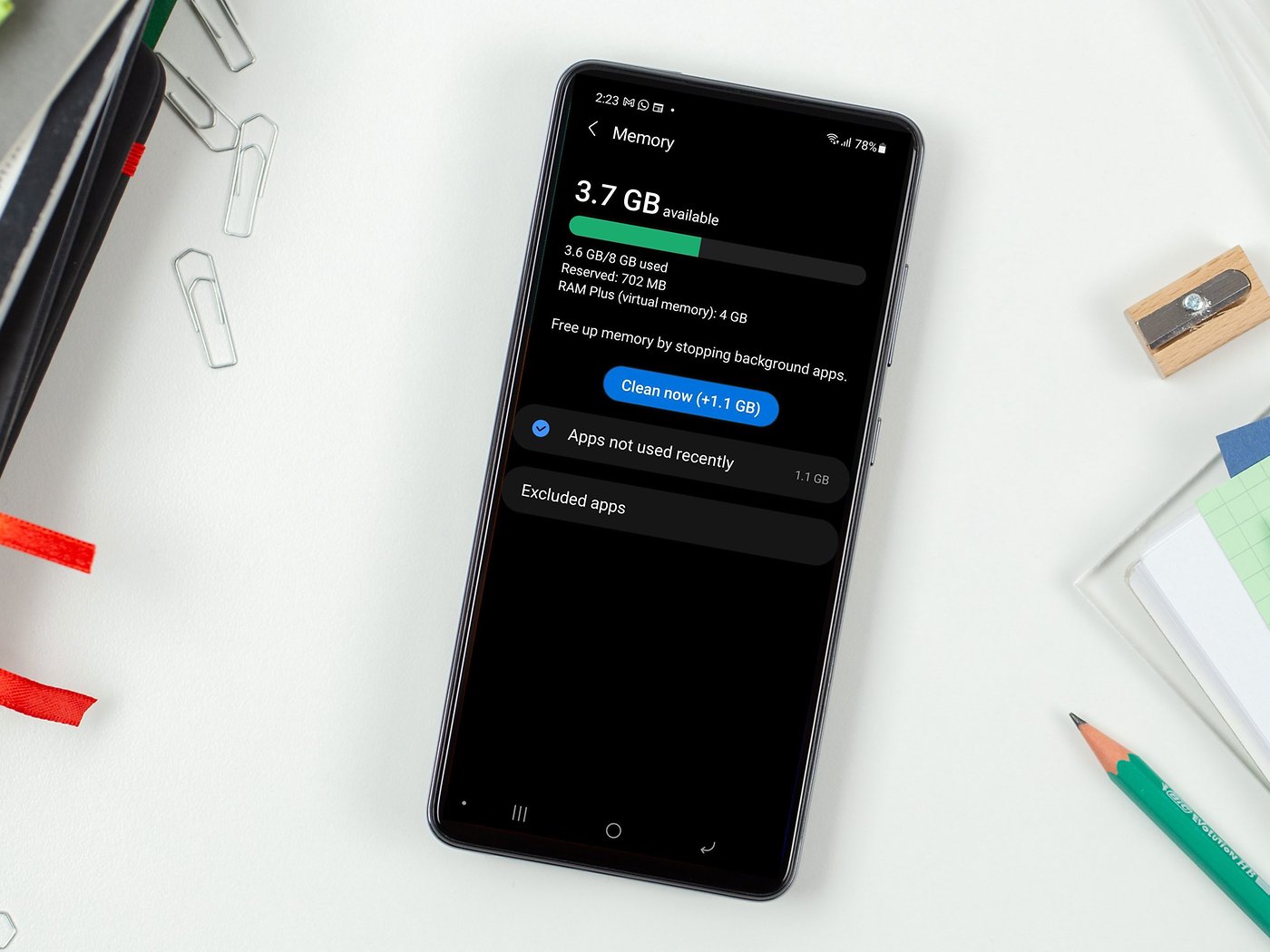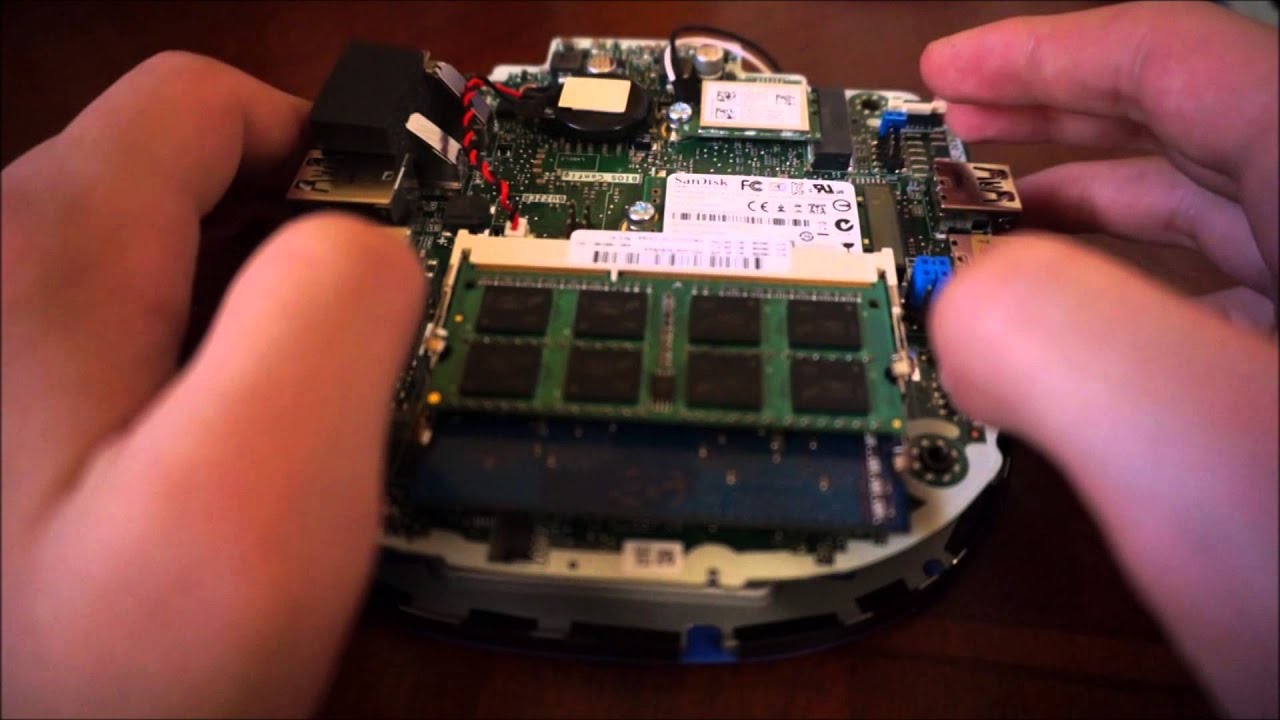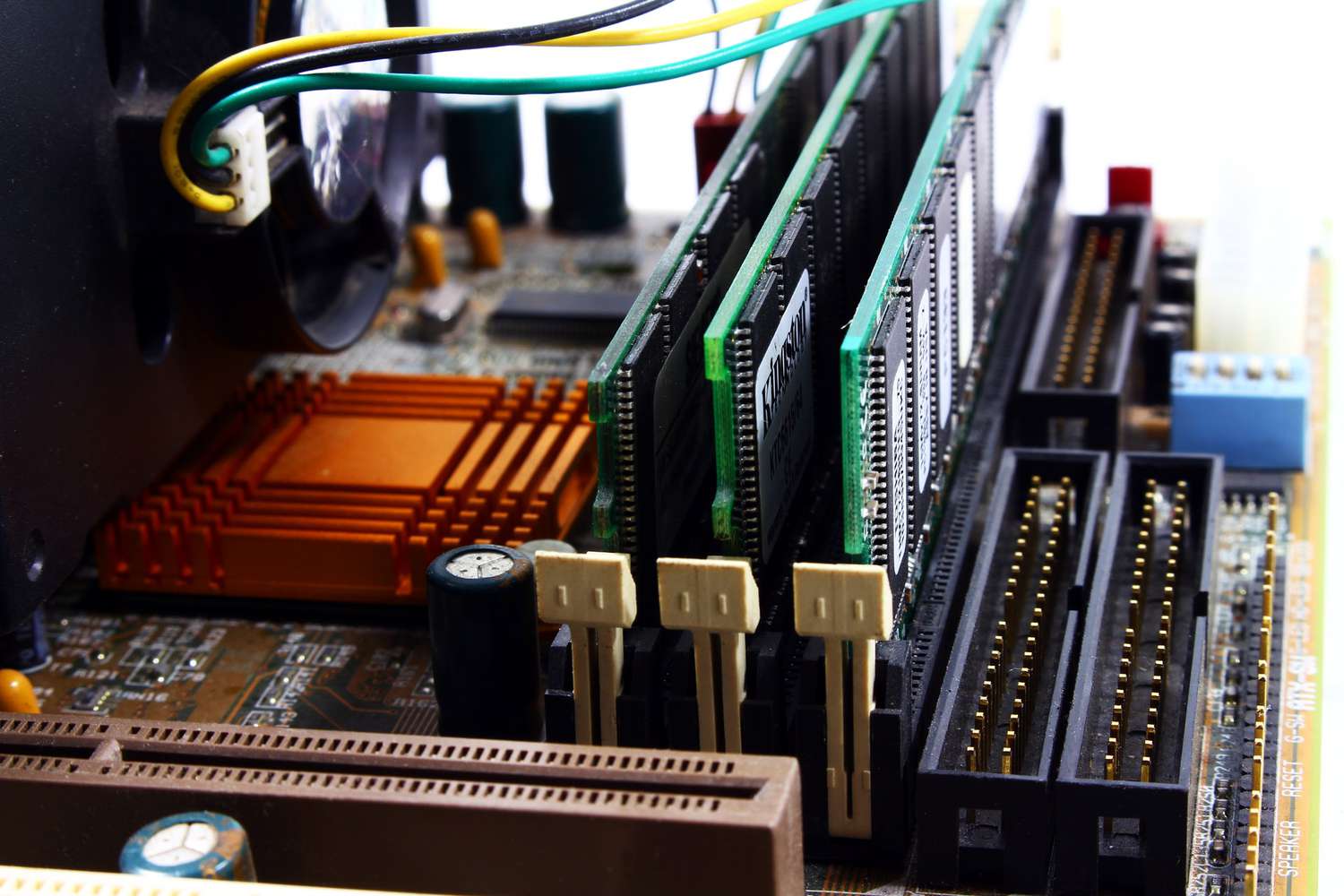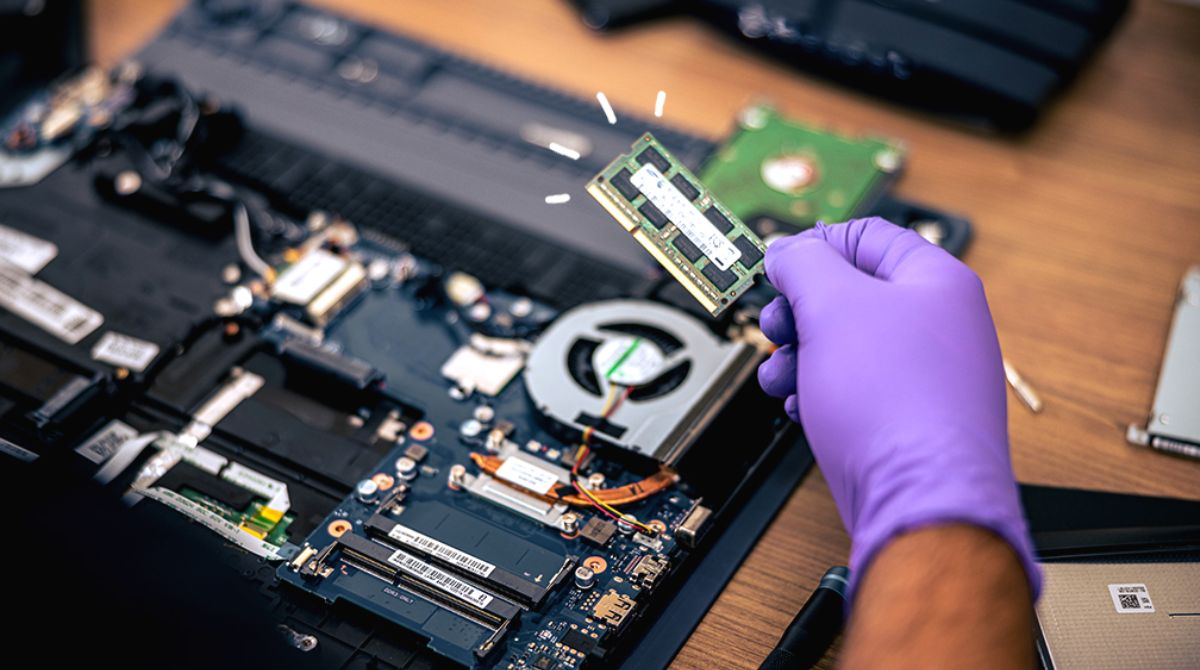Introduction
Have you ever experienced your computer slowing down, freezing, or struggling to handle multiple tasks at once? These performance issues can be frustrating, especially when you’re in the middle of an important project or trying to run resource-intensive applications. One potential solution to these problems is to upgrade your computer’s RAM, or Random Access Memory.
RAM plays a crucial role in the overall performance and speed of your computer. It is a type of volatile memory that stores data that is actively being used by the computer’s programs and operating system. Unlike your computer’s hard drive or SSD, which store data for long-term use, RAM provides temporary storage for data that needs to be accessed quickly. Think of it as a short-term memory for your computer.
With more RAM, your computer can handle higher workloads and more demanding tasks. It allows your computer to run multiple programs simultaneously without slowing down or freezing. This additional memory can make a noticeable difference in the overall performance and responsiveness of your computer.
In the following sections, we will dive deeper into the benefits of upgrading your RAM, exploring how it can help improve multitasking ability, application loading times, gaming performance, web browsing experience, video editing, rendering, and virtual machine performance. By understanding the impact of increased RAM on these aspects, you’ll be able to make an informed decision about whether upgrading your computer’s memory is worth it for you.
How Does RAM Work?
Before delving into the benefits of more RAM, let’s first understand how RAM works. When you run a program or open a file on your computer, the relevant data is loaded from your hard drive or SSD into RAM. This allows the computer’s processor to quickly access the necessary information and execute the commands.
RAM is divided into small, equally-sized cells known as memory addresses. Each memory address can store a fixed amount of data, generally measured in bytes. These cells are arranged in a grid-like structure, and the computer uses memory controllers to read from or write to specific addresses.
As data is loaded into RAM, it can be accessed by the computer’s processor almost instantaneously. This quick access is what enables smooth and efficient multitasking. If your computer doesn’t have enough RAM to hold all the required data, it will rely on virtual memory, which is a section of the hard drive or SSD designated for temporary storage. However, virtual memory is significantly slower than RAM, so having sufficient RAM is vital for optimal performance.
RAM is volatile memory, meaning that it only holds data as long as the computer is powered on. When you shut down your computer, the data in RAM is wiped clean. This is why it’s important to save your work frequently, as any unsaved data residing in RAM will be lost.
When it comes to upgrading your RAM, there are a few factors to consider. First, you need to ensure that your computer’s motherboard supports the type and amount of RAM you plan to install. Additionally, different operating systems have limitations on the maximum amount of RAM they can effectively utilize. Checking your computer’s specifications and consulting the manufacturer’s guidelines will help you determine the compatible RAM capacity for your system.
Now that we have a solid understanding of how RAM works, let’s explore the benefits of upgrading your computer’s memory in the next sections.
Increased Multitasking Ability
One of the primary advantages of upgrading your RAM is the significant improvement in multitasking ability. When you have more RAM, your computer can handle running multiple programs and tasks simultaneously without experiencing a slowdown or performance drop.
With more RAM, you can effortlessly switch between applications, open numerous browser tabs, edit photos or videos, and work on complex projects without experiencing any lag or delays. Whether you’re a student juggling multiple research papers, a professional working on large datasets, or a creative individual running resource-intensive software, increased multitasking ability can greatly enhance your productivity.
For example, if you’re a graphic designer, having more RAM means you can run memory-hungry applications like Adobe Photoshop or Illustrator while also having other design-related tools, such as a color picker or a font manager, running in the background. This allows for a seamless workflow, enabling smoother and faster project completion.
Moreover, if you frequently use virtual machines for tasks like software development or testing, additional RAM provides a significant boost to their performance. Running virtual machines alongside your regular tasks can require a substantial amount of memory. With more RAM, you can allocate sufficient resources to each virtual machine without hindering the overall system performance.
Not only does increased multitasking ability allow you to accomplish more in less time, but it also reduces frustration and interruptions caused by slow or unresponsive applications. You won’t need to constantly close and reopen programs or wait for processes to complete before moving onto the next task.
In summary, upgrading your RAM improves your computer’s multitasking ability, allowing you to run multiple programs and perform various tasks simultaneously. This enhanced capability translates into increased productivity, smoother workflow, and a more efficient use of your time.
Faster Application Loading Times
One of the noticeable benefits of upgrading your RAM is the significant reduction in application loading times. When you launch a program or open a file, the data required by the application is loaded from your storage device into RAM. The more RAM you have, the more data can be stored in it, allowing for faster access and loading times.
With increased RAM, applications load quickly and respond promptly to your commands. This is particularly beneficial for resource-intensive programs like video editing software, 3D modeling tools, or complex games. These applications require a substantial amount of data to be loaded into RAM to function smoothly.
For instance, if you’re a video editor working on large, high-definition video projects, upgrading your RAM can significantly reduce the time it takes to import, edit, and export files. The increased memory allows the editing software to keep more data readily accessible, ensuring smooth playback and real-time editing without any lag or stuttering.
Similarly, gamers can benefit from faster application loading times with additional RAM. Games today have stunning graphics, large open-world environments, and intricate details that require ample memory to load and render smoothly. By upgrading your RAM, you can reduce game loading times and get into the action faster. It also helps prevent mid-game slowdowns or stutters caused by the system struggling to allocate memory in real-time.
Furthermore, applications that heavily rely on frequent access to lots of data, such as database management systems or scientific modeling software, can greatly benefit from increased RAM. Handling large datasets becomes much more efficient, resulting in faster data retrieval and analysis.
In summary, upgrading your RAM leads to faster application loading times, enabling software, games, and other resource-intensive programs to load quickly and respond promptly. This improvement enhances your overall computing experience and allows you to get to work or play faster without unnecessary delays or frustration.
Improved Gaming Performance
For avid gamers, upgrading your RAM can lead to a significant improvement in gaming performance. RAM plays a crucial role in gaming, as it is responsible for loading and storing the game’s assets, such as textures, models, and audio files.
With more RAM, your computer can store a larger portion of the game’s data, allowing for quicker access and smoother gameplay. This translates into faster loading times, reduced texture pop-in, and seamless transitions between different game environments and levels.
In open-world games, where you have vast landscapes and intricate details, additional RAM allows for more assets to be stored, resulting in a more immersive gaming experience. You’ll notice less lag or delay when exploring the game world, interacting with NPCs, or engaging in intense battles.
Moreover, having sufficient RAM is especially important in multiplayer gaming. Many multiplayer games require a significant amount of memory to handle the network communication, player interactions, and real-time rendering. Upgrading your RAM can help ensure smooth gameplay, reduce latency, and minimize in-game stuttering caused by insufficient memory resources.
Another aspect of gaming where RAM plays a crucial role is in modding. Many games have a vibrant modding community that creates custom content, modifications, and enhancements. Modded games can place a heavy load on system resources, including RAM. With more RAM, you can install and run mods without worrying about hitting memory limitations, allowing you to enjoy a fully customized gaming experience.
It’s important to note that while upgrading your RAM can improve gaming performance, it may not be the sole determining factor. Other components, such as the processor, graphics card, and storage drive, also contribute to overall gaming performance. However, having sufficient RAM ensures that your system has enough memory to support your gaming needs without becoming a bottleneck.
In summary, upgrading your RAM can significantly enhance your gaming performance. Faster loading times, reduced texture pop-in, seamless transitions, and improved multiplayer experiences are just a few of the benefits. Whether you enjoy immersive open-world adventures or competitive multiplayer battles, having more RAM can take your gaming experience to the next level.
Better Web Browsing Experience
In today’s digital age, web browsing has become an integral part of our daily lives. Whether you’re researching, shopping, streaming media, or connecting with others, a faster and smoother web browsing experience is always desirable. Upgrading your RAM can contribute to a better web browsing experience in several ways.
Firstly, with more RAM, your computer can hold a larger cache of web pages and resources. When you visit a website, your browser stores certain elements, such as images, scripts, and CSS files, in its cache. This allows for faster loading times when you revisit the same site. With increased RAM, your browser can store a larger cache, reducing the need to constantly re-download elements, resulting in faster page loading and a more responsive browsing experience.
Additionally, modern websites are becoming more complex, with dynamic content, multimedia elements, and interactive features. This can place a significant demand on your computer’s resources, including RAM. By upgrading your RAM, you ensure that your computer can handle these resource-intensive websites without slowing down or freezing up.
Furthermore, if you’re the type of person who loves to have multiple tabs open simultaneously, more RAM becomes essential. Each open tab consumes memory, and with limited RAM, your computer may struggle to keep up with the demands of running multiple tabs. This can lead to sluggish performance, laggy scrolling, and even browser crashes. With additional RAM, you can have multiple tabs open without sacrificing speed or responsiveness.
Another aspect where increased RAM can benefit web browsing is with browser extensions and add-ons. Many users rely on these tools to enhance their browsing experience, block ads, manage passwords, or increase security. However, some extensions can be resource-intensive and consume a significant amount of memory. With more RAM, you can comfortably use these extensions and enjoy their benefits without negatively impacting browser performance.
Lastly, if you frequently use web-based applications or cloud services, upgrading your RAM can improve their performance as well. Tools like Google Docs, online photo editors, or project management platforms rely on browser-based technology and often require a substantial amount of memory. With additional RAM, these web applications can run smoothly, enabling you to work efficiently without slowdowns or glitches.
In summary, upgrading your RAM leads to a better web browsing experience by enabling faster page loading, smoother multimedia playback, improved performance with multiple tabs and browser extensions, and enhanced compatibility with web-based applications. With more RAM at your disposal, you can browse the web seamlessly and enjoy a more efficient online experience.
Enhanced Video Editing and Rendering
If you’re a video editor or content creator, upgrading your RAM can greatly enhance your video editing and rendering capabilities. Video editing software, such as Adobe Premiere Pro or Final Cut Pro, relies heavily on memory to handle large video files, complex effects, and real-time previews.
With more RAM, you can load and work with high-resolution video files more efficiently. Video editing software stores a significant amount of data in RAM to ensure smooth playback and seamless editing. Upgrading your RAM allows the software to keep more frames, effects, and clips in memory, reducing the need for constant read and write operations from the storage device. The result is a faster and more responsive editing experience.
The added memory also enables real-time previews of complex effects, transitions, and color grading adjustments. As you apply filters, edit timelines, or make changes to your video project, having more RAM ensures smoother playback, allowing you to see your edits in real-time without rendering or lag.
When it comes to rendering, upgrading your RAM can significantly reduce export times. Rendering involves finalizing your edited video and converting it into its final format. This process requires a substantial amount of memory since the video editing software needs to load frames, apply effects, and perform compression or encoding algorithms.
Having more RAM allows the software to keep larger portions of the video in memory during rendering, resulting in faster processing and shorter export times. This is particularly beneficial when working with 4K or high-resolution videos, as these files require more memory to render efficiently.
Furthermore, if you work with multiple video and audio tracks, complex visual effects, or rely on plug-ins and third-party add-ons, additional RAM becomes even more crucial. These elements can put a strain on your computer’s resources, including memory. By upgrading your RAM, you ensure that your video editing software has enough memory to handle these demanding tasks smoothly.
It’s worth noting that while RAM is crucial for video editing, other factors, such as the CPU and GPU, also play a significant role in overall video editing performance. However, having sufficient RAM is essential for optimal utilization of these resources and ensuring a seamless editing experience.
In summary, upgrading your RAM leads to enhanced video editing and rendering capabilities by allowing for smoother playback, real-time previews of effects, and shorter export times. Whether you’re editing short films, vlogs, or professional video projects, more RAM enables you to work effortlessly with high-resolution video files and complex edits, resulting in a more efficient and enjoyable video editing workflow.
Increased Virtual Machine Performance
If you frequently use virtual machines (VMs) for tasks like software development, testing, or running different operating systems, upgrading your RAM can significantly enhance their performance. VMs require a portion of your computer’s memory to create a virtual environment where you can install and run an entire operating system along with its applications.
With more RAM, you can allocate a larger amount of memory to each virtual machine, allowing them to perform better and handle more intensive tasks. By increasing the memory available to a VM, you provide it with the resources necessary to run smoothly without competing for memory with the host operating system or other VMs.
Adequate RAM is especially important when running multiple VMs simultaneously. Each virtual machine requires its own separate memory allocation to run efficiently. Insufficient memory can lead to slow performance, increased disk swapping, and potential crashes or freezes.
By upgrading your RAM, you can create and run multiple VMs without compromising performance. This is particularly useful for software developers who require different environments for testing and compatibility checks. With more memory available, you can have several VMs running simultaneously, allowing you to switch between them seamlessly and work on various projects concurrently.
Virtual machines can also benefit from more RAM when it comes to resource-intensive tasks. For example, if you’re running VMs that operate as servers or perform data analysis, having additional memory ensures that these VMs can efficiently handle the workload without experiencing slowdowns or resource contention.
Moreover, when using VMs for software testing, having more RAM allows for larger sample sizes and more comprehensive tests. This is particularly crucial for load testing or simulations that require a substantial amount of data to be processed simultaneously.
It’s important to note that while increasing RAM can improve virtual machine performance, there are other factors to consider, such as CPU performance, storage speed, and network capabilities. These components work together to provide a well-rounded VM experience. However, having sufficient RAM is essential for smooth virtual machine operation and the overall performance of your virtualized environment.
In summary, upgrading your RAM leads to increased virtual machine performance by providing more memory resources to each VM and allowing for the smooth operation of multiple VMs simultaneously. Whether you’re a developer working on different environments or a tester running resource-intensive simulations, more RAM ensures that your virtual machines can handle the workload without compromising performance.
Conclusion
Upgrading your computer’s RAM can bring a multitude of benefits and improve its overall performance in various aspects. With more RAM, you can experience increased multitasking ability, allowing you to run multiple programs simultaneously without slowdowns or freezes. It also leads to faster application loading times, ensuring a seamless and efficient user experience.
Gaming enthusiasts can enjoy enhanced gaming performance with additional RAM, resulting in faster loading times, reduced texture pop-in, and smoother gameplay. Web browsing becomes more enjoyable as well, with faster page loading, improved multimedia playback, and the ability to handle multiple tabs and browser extensions without sacrificing performance.
For video editors and content creators, upgrading RAM leads to an enhanced editing experience, allowing for smoother playback, real-time previews, and faster rendering times. And if you work with virtual machines, more RAM can significantly improve their performance, enabling you to run multiple VMs simultaneously and handle resource-intensive tasks with ease.
It’s important to note that while upgrading your RAM can offer substantial benefits, it is also essential to consider other hardware components, such as the CPU, GPU, and storage, for a well-rounded system performance. Additionally, make sure to check your computer’s specifications and compatibility before upgrading your RAM to ensure a seamless installation process.
All in all, upgrading your computer’s RAM is a worthwhile investment that can enhance your productivity, gaming experience, multimedia capabilities, and efficiency in various tasks. By providing your system with the necessary memory resources, you can unlock its full potential and enjoy a seamless computing experience.







